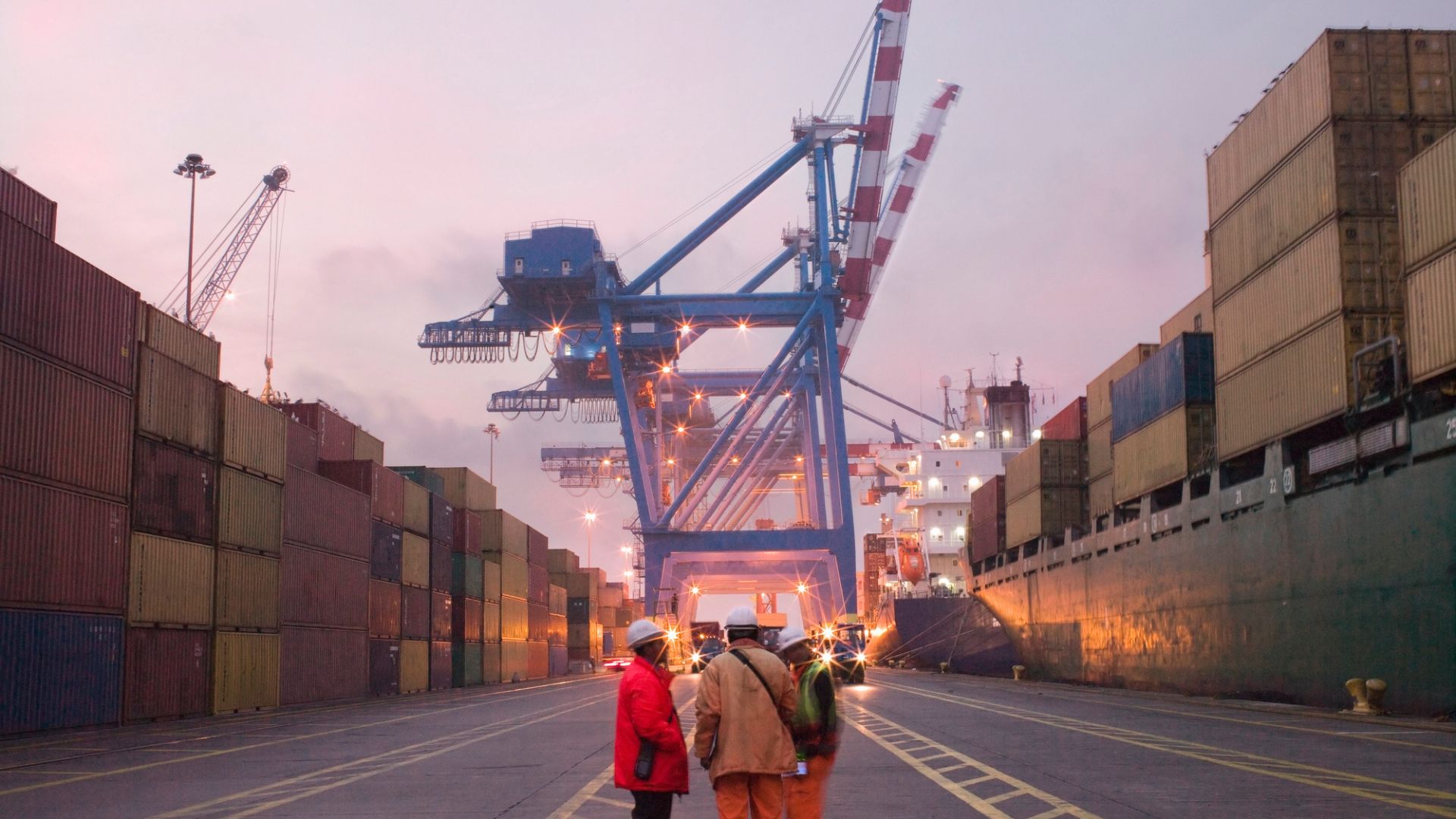A massive International Longshoremen’s Association (ILA) strike looms large over the U.S. economy.
With nearly 50,000 dockworkers walking off the job this week, shipping container traffic has been halted at 14 major ports along the East Coast – the first shutdown in almost 50 years.
The timing couldn’t be worse for retailers gearing up for the critical holiday season.
A disruption of this scale could impact the movement of goods through ports from Boston to Houston, all of which handle millions of tons of cargo annually and employ thousands of unionized dockworkers.
The Port of New York and New Jersey is the largest on the East Coast, moving 7.8 million TEUs of cargo in 2023. (TEU stands for Twenty-foot Equivalent Unit, the standard unit of measurement.) Critical ports like Savannah and Houston also play key roles in the supply chains of many U.S. retailers.
A prolonged work stoppage could severely impact these hubs and, by extension, disrupt supply chains across the country.
For companies that rely heavily on these ports, the consequences could be profound, affecting everything from inventory to profit margins to – you guessed it – stock prices.
With this context in mind, we’re shining a spotlight on the potential winners and losers that investors should keep an eye on as this situation unfolds…
3 Potential Winners
Costco Wholesale (COST)
Costco stands out as one of the most prepared for this kind of disruption. The bulk retailer has diversified its supply chain, routing products through various ports across the country, including the West Coast. Its proactive approach of rerouting freight and diverting shipments means Costco is well-positioned to ensure holiday inventory remains on schedule. Costco’s ability to pivot quickly is one reason it could weather any strike with minimal impact, allowing the company to maintain inventory levels and full-price sales.
Dollar Tree (DLTR)
With over 50% of its freight routed through East Coast ports, Dollar Tree is already planning for potential delays. However, the company has taken significant steps to mitigate these risks, including rerouting deliveries to alternative ports and putting plans in place to use airfreight where necessary. This could limit disruption to Dollar Tree’s low-cost goods, giving it a potential advantage over competitors who are less prepared.
Lululemon (LULU)
Lululemon has a strong track record of agility when it comes to supply chain management. The athleisurewear retailer’s ability to reroute shipments, including utilizing airfreight for high-priority items, positions it well to maintain smooth operations, even in the event of port disruptions. The luxury price point of LULU’s goods also allows for some flexibility to absorb higher shipping costs.
3 Potential Losers
Dick’s Sporting Goods (DKS)
Dick’s Sporting Goods relies on vertical brand products for about 13% of its sales, much of which is routed through East Coast ports. Its supply chain is highly centralized, and while Dick’s has taken some steps to mitigate potential issues, its ability to pivot quickly is limited. Any significant delays could result in inventory shortages during the peak holiday season, forcing the company to offer markdowns that would squeeze margins.
Ollie’s Bargain Outlet (OLLI)
Ollie’s doesn’t have the supply chain flexibility of other larger retailers. The bargain retailer depends heavily on imported goods through West Coast ports, which are already strained. With less room to maneuver and fewer resources to expedite shipments through alternative methods like airfreight, Ollie’s could see delays that impact its low-margin, discount-driven business model.
Nordstrom (JWN)
Nordstrom’s private-label brands rely heavily on West Coast and Asia-based imports, putting it at a disadvantage if East Coast ports become congested. While Nordstrom hasn’t revealed specific contingency plans, its lack of clear communication regarding potential disruptions signals that it could face significant challenges in getting its holiday products to stores on time.
3 Stocks to Be Determined
Target (TGT)
Target has indicated that the majority of its shipments are processed through West Coast ports, but the company is actively monitoring the situation and preparing contingency plans. The key question for Target is whether these plans are robust enough to prevent holiday season delays. If the strike drags on, rerouting shipments could become increasingly difficult.
Home Depot (HD)
Home Depot is another retailer to watch closely. While its domestic supply chains give the home improvement retailer some insulation from disruptions, the cost of rerouting goods and longer lead times could still put pressure on margins. The impact on Home Depot will depend largely on how long any potential port strike lasts.
BJ’s Wholesale Club (BJ)
Like Costco, BJ’s has diversified its supply chain and put contingency plans in place. However, the company has not provided clear insight into how it would handle a prolonged strike. BJ’s ability to adapt quickly will be key to avoiding major inventory shortages during the holiday rush.
Bottom line: This situation remains fluid as retailers brace for potential disruptions. While some companies like Costco, Dollar Tree, and Lululemon have taken proactive measures to minimize risks, others – including Dick’s Sporting Goods, Ollie’s, and Nordstrom – may face significant challenges. For investors, this is a crucial moment to pay attention to how these companies manage their supply chains in the face of uncertainty.
Paid-up members will be the first to know if we issue a trade alert on any of these stocks, allowing them to capitalize on potential opportunities that arise from the strike.
Stay tuned…
Until next time,

Andy Swan
Founder, LikeFolio
